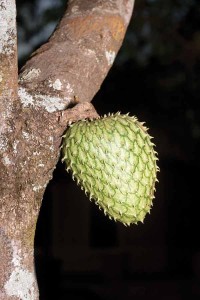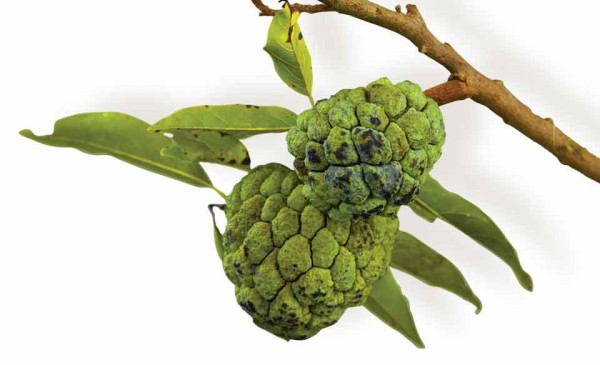Annona
A great way to improve your diet and health
Many species of the family Annonaceae (custard-apple family), for example the soursop, cherimoya and sugar apple seeds, constitute significant sources of lipids, proteins and carbohydrates and can therefore be used in food and feed, and offer relevant antioxidant activity of phenolic compounds. The oil in the seeds are a good source of unsaturated fatty acids, especially oleic and linoleic acids.The genera Annona are also important sources of minerals, such as calcium, phosphorus and potassium. These are important in biological functions, such as helping to protect bones and teeth, providing strong muscles and improving general health.
The principal interest in these plants is because of its strong anti-cancer effects. The plants are derived from specific species, and various parts of several of the species have proven to be cancer remedies; also they are a broad spectrum antimicrobial agent for both bacterial and fungal infections (Attersfield y Potter 2008).
Annona species usually start flowering between 3–6 years after planting, depending on the type of propagation, cultural practices such as pruning or hand pollination, and climate. Annona fruits reach mature individually, so harvesting should be carried out selectively.
If you are interested in a photo exhibit on edible (and nutritious) tropical fruits of the Maya and Mesoamerica, or if you wish to have a joint project to utilize our photographic team(s), you can contact FLAAR at FrontDesk@FLAAR.org. Our current exhibit (on sacred Mayan flowers) is at the Missouri Botanical Garden (the home city of FLAAR in the U.S.)
VARIETIES
Chirimoya and sugar apples change from grayish green to yellowish-green, but their pulp should be firm. Soursop skin changes from dark green to slightly yellowish-green.
Sugar apple fruits reach the “harvest point” for local markets when the carpels are spread far apart, exposing a yellow creamy skin in the inner part between carpels.
Wild soursop is ripe when the white specks on the skin become orange-yellow.
Annona cherimola is a photogenic species. The outside is very similar to that of A. squamosa. But with the chirimoya the protrubances are more widely separated.
Annona diversifolia is characterized by spaced wide bumps, but not as sharp or remarkable as some other species.
Annona glabra has a relatively smooth skin and is not as bizarre looking (and hence not as photographic) as the other species.
Annona purpurea, in my opinion, is the most photogenic fruit in Guatemala. But it is a challenge to find a mature fruit that is not already splitting open.
Annona reticulata has a graduated pattern, as sunken as other Annona fruit exteriors stick out.
Annona scleroderma, poshte, has a pattern that resembles a dried out lake bottom, or mud that dried and cracked.
Annona muricata has soft spiny-like protrusions; thin, not thick like on the A. squamosa or A. cherimola. The soursop, guanabana, is common throughout many areas of Guatemala and Copan area of Honduras.
Annona squamosa has a consistent, continuous overlapping pattern.
Annona reticulata is relatively smooth, comparable to A. glabra.
Dr. Nicholas M. Hellmuth is director of FLAAR Reports (Foundation for Latin American Anthropological Research). Contact Dr. Hellmuth at frontdesk@flaar.org

